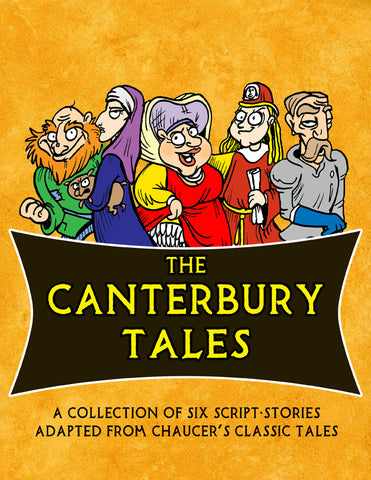
Although spring showers haven’t exactly pierced the drought of March to the root—in fact, winter’s coming on fast—I am inspired to write about The Canterbury Tales. Why? Because it’s a blast to teach in my British Literature class! Yes, you heard me right. An “old, moldy” classic is a blast to teach! So without further ado I give you five reasons to teach this entertaining (and sometimes raunchy) classic!
- The Canterbury Tales perfectly captures the emergence of the Middle Class. Many great works of literature perfectly capture a particular time period. When Geoffrey Chaucer wrote The Canterbury Tales, the Middle Ages was giving birth to another “middle”—the middle class. Society was no longer divided into simply lord and peasant; professions were springing into existence, and all of a sudden skilled craftsmen were making enough money to afford things like a pilgrimage to Canterbury Cathedral. This rocked society. But why read about this phenomenon as a paragraph in a history textbook when it virtually leaps off the page in The Canterbury Tales? In “The General Prologue” Chaucer introduces his list of twenty-nine pilgrims, describing their ranks in society and also lampooning them in the process. When I asked my student to pick their favorite section of The Canterbury Tales, I expected them to choose from the various tales the pilgrims told. Yet many of them picked the General Prologue itself: They enjoyed reading the descriptions of the medieval professions and Chaucer’s opinions of them.
- Find out where your surname comes from. Around the same time Chaucer wrote The Canterbury Tales, surnames (last names) were just becoming a necessity. With more and more people congregating to the cities, one John had to be distinguished from another. Hence, surnames were developed, and a frequent source of these surnames was a person’s profession. As a side assignment, I asked students to research the meaning of their surnames. Usually, we do this as a group activity on the classroom screen—looking up each student’s surname one by one. For other variations of this assignment, as well as a list of common surnames, follow this link.
- The Canterbury Tales celebrates the art of storytelling. Chaucer understood that who is telling the story matter. Each narrator’s personality makes its way into the story he or she chooses to tell. Likewise, the stories we choose to tell and how we tell them speaks volumes about us. As a side assignment to reading The Canterbury Tales, I set aside a day in class for my students to sit in a circle and tell a story one at a time. Turns out, some of my students were natural-born storytellers, and they listed this assignment as one of their favorites all year.
- Chaucer is hilarious. When is the last time you have seen high-schoolers guffawing at 900-year-old literature? Well, you might give The Canterbury Tales a try. Granted, the version that my students experience is a read-aloud adaptation, but the humor is all Chaucer. (These read-alouds also remove the raunchier parts. I wouldn’t want my students to read “The Miller’s Tale” uncensored on my watch!) Yet no matter how you unleash Chaucer’s rapier-sharp wit on them, students will get it. They love his scathing humor, which seems quite modern. After reading the adaptations of the tales, my students were eager to seek out the originals—as well as the tales we did not read in class.
- Chaucer’s style serves as a good model for satire. After reading Chaucer’s send-up of medieval types, I ask my students to write a character sketch of a certain profession. In the sketch they are encouraged to point out the shortcomings of the profession—just like Chaucer did. Also like Chaucer, their character sketch must rhyme. For a complete outline of this assignment, follow this link.
A Reader’s Theater adaptation of several of Chaucer’s best tales is available for download on this site. This download features “The General Prologue,” “The Knight’s Tale,” “The Miller’s Tale,” “The Wife of Bath’s Tale,” “The Pardoner’s Tale, and “The Nun’s Priest’s Tale.” For more information follow this link.
Available as a free download, “The Pardoner’s Tale” is a sample of how this type of activity would work in your own classroom! Click here to see it!
